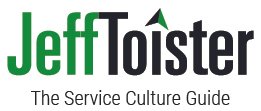New hire training is under pressure.
Executives want to shorten it. Training costs time and money. The faster new employees can get to work, the better.
New employees want it to be longer. They complain about not getting enough support. Some quickly leave.
I asked people on LinkedIn how long they thought new hire training should last, adding the caveat that I knew it was a trick question. There was a lot of discussion.
Responses generally fell into two categories.
Some felt new hire training is ongoing and should never end. While that's great in theory, try asking your CEO to fund unlimited training. (Spoiler alert: it won't go well.)
The second group offered an arbitrary number based on what they're doing in their company. "Our new hires get four weeks, so four weeks is ideal" was a common type of answer.
The arbitrariness is a problem. How do we know four weeks is the right amount? Especially when our CEO thinks it should be three, but our new hires are asking for five.
A few smarties knew the answer. New hire training should last for a finite amount of time, but how long exactly varies by company and position.
Here's how to find that number for your new hires.
What is new hire training?
Here's my preferred definition of new hire training:
The process of helping a new employee develop the knowledge, skills, and abilities they need to do their job independently at a minimally proficient level.
This definition illustrates why executives are eager to end training quickly. New hires can't work independently until they're trained, so someone else has to spend time helping them. That's costly.
When should new hire training end?
The definition of new hire training contains clues about when it should end:
Independence: the employee can do the job on their own.
Minimally proficient: they can do their job at or above the minimum standard.
There are a couple of things I’d like to point out here.
First, notice there’s no discussion of content. It doesn’t matter how much (or how little) content you cover in training. What matters most is performance. (More on why that matters in a moment.)
Second, keep in mind "minimally proficient" still leaves plenty of room for ongoing development. We hope and expect new hires to continue getting better at the job, but the new hire portion ends when they can meet the minimum job standards on their own.
So the key to fixing an end-point for new hire training is deciding what minimally proficient looks like.
That's fairly easy in some businesses. Contact centers have rigorous quality assurance processes they use to evaluate all their agents against existing standards. Those same standards can be used to evaluate whether a new hire is trained.
No such standards exist in other businesses, which speaks to a larger problem. How can you evaluate your employees without clear performance standards?
One solution is to create learning objectives using the ABCD model.
How do you decide how much training time you need?
New hire training should last for a specific amount of time. This number should not be arbitrary, so we need clear data that tells us how long we really need.
But first, clean up your training program.
New hire training should be focused on helping new employees do their job independently at a minimally proficient level. Check your existing program for two issues that need to be fixed:
Cut anything that's not helping you achieve the goal. (There’s probably a lot.)
Spend more time helping new hires build the skills they really need.
Next, run a test.
Time how long it takes new hires, on average, to become minimally proficient at their jobs. (That's when new hire training officially ends.)
Use this data to make the case for a specific amount of new hire training. It might help to keep a daily log on each participant, so you can document exactly what they learned and how long it took them to learn it.
There is some good news.
In my experience, new hire training often ends up much shorter after we clean it up. Focusing on achieving specific goals while eliminating unnecessary content often makes the training far more effective.
Finally, it's time to manage the program.
You'll likely have some outliers. Some people will catch on far faster than average, while others will need much more time, if they catch on at all.
It's okay for people to progress through training faster, as long as they can demonstrate the ability to meet the same standards as everyone else.
The slow ones might need more coaching. That's okay, too, as long as they can ultimately do their job with a reasonable amount of extra help. Hiring great people is difficult, and you want to protect your investment.
Take notes about what causes those people to succeed or struggle. You can use that data to provide personalized assistance and continuously improve your program.
Conclusion
There will always be pressure to improve efficiency in business. This approach can help you convince your CEO that’s exactly what you’re doing.
Clearly defining the new hire training period and documenting how long training actually takes can give you two important selling points:
You can improve the efficiency of your training program.
You'll have real data to justify your recommendations for training time.




